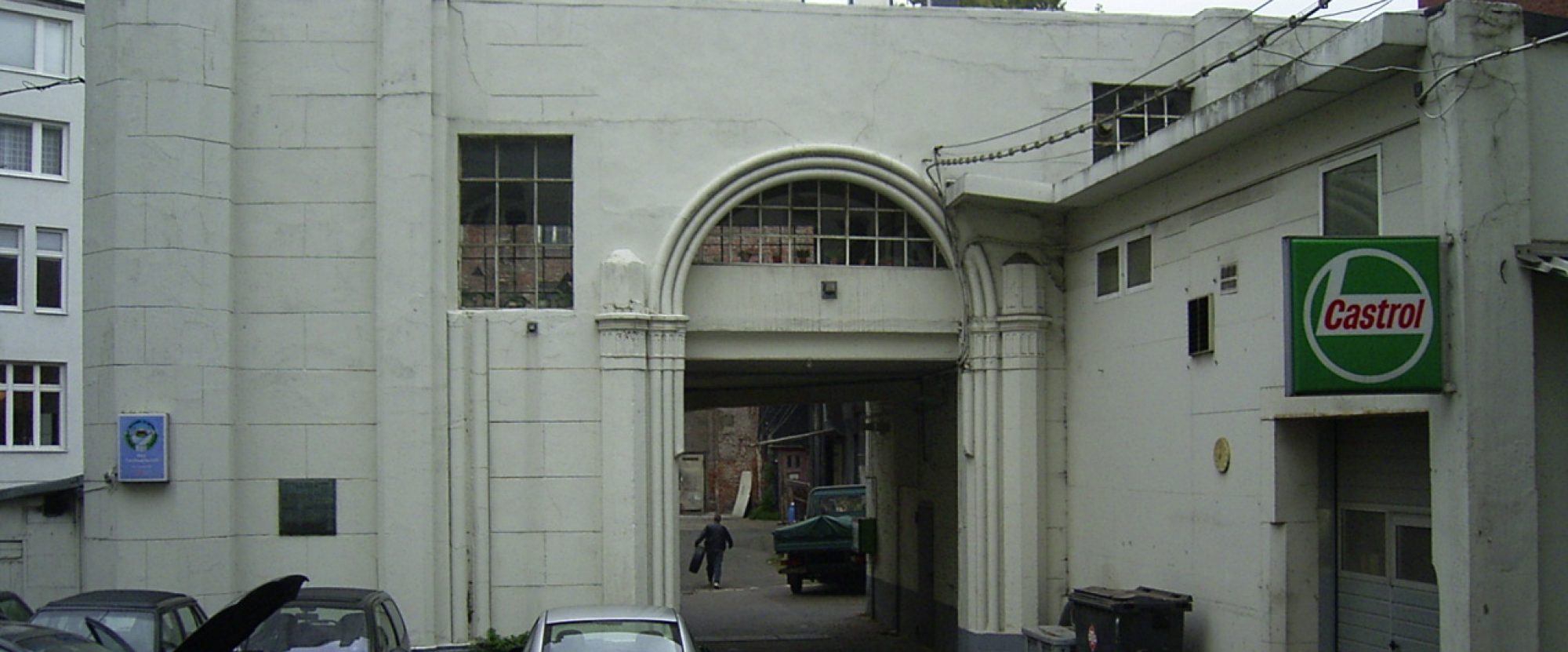In Hamburg’s Poolstraße, in the centre of the Neustadt, formerly inhabited by the majority of Hamburg’s Jews, there once stood the first temple building ever designed and realised by liberal Jews specifically for this purpose. Today, there is only a ruin standing there, which nevertheless gives an idea of the former splendor and charisma. Remains of the building are now used as a car repair shop or are in decay.
The temple in Poolstraße was built between 1842 and 1844 according to the plans of the architect Johann Hinrich Klees-Wülbern. Gabriel Riesser succeeded in 1843 that the Pool Street Temple could be bought and registered in the name of the Temple Society. Previously, Jews (in contrast to the Christian denominations) had to purchase synagogues in the name of a private person.
The façade of the entrance section building to the west was flanked by two lateral octagonal towers in the style of minarets and incorporated elements of both the Moorish and the Classicist-Neo-Gothic architectural styles. The portal of the building had a Hebrew chronostichon as its heading. The translation reads: “Blessed is he who comes in the name of the Eternal.” (Ps 118.26 EU)
Several parts of the building did not conform to the traditional building patterns for synagogues and pointed to the reform programme: One unusual feature was a large gate opening the vestibule as a common entrance for men and women. To the left of the gate, a staircase led to the choir gallery and to the organ built by Paul Rother. Both were thus located above the vestibule and this was completely unusual for an Orthodox rite, also because the partially paid mixed choir performed from above and outside the main nave, although a boys’ choir usually sang below in close contact with the congregation. The women’s cloakroom, on the other hand, was conventionally, i.e. separately accommodated, accessible via the aforementioned left vestibule staircase, while the men’s cloakroom was located opposite on the right. The main nave, measuring 40 m × 23 m with an arched roof, had room for 380 men.
This campaign is being supported by the Foundation for Jewish Heritage, London
![]()
